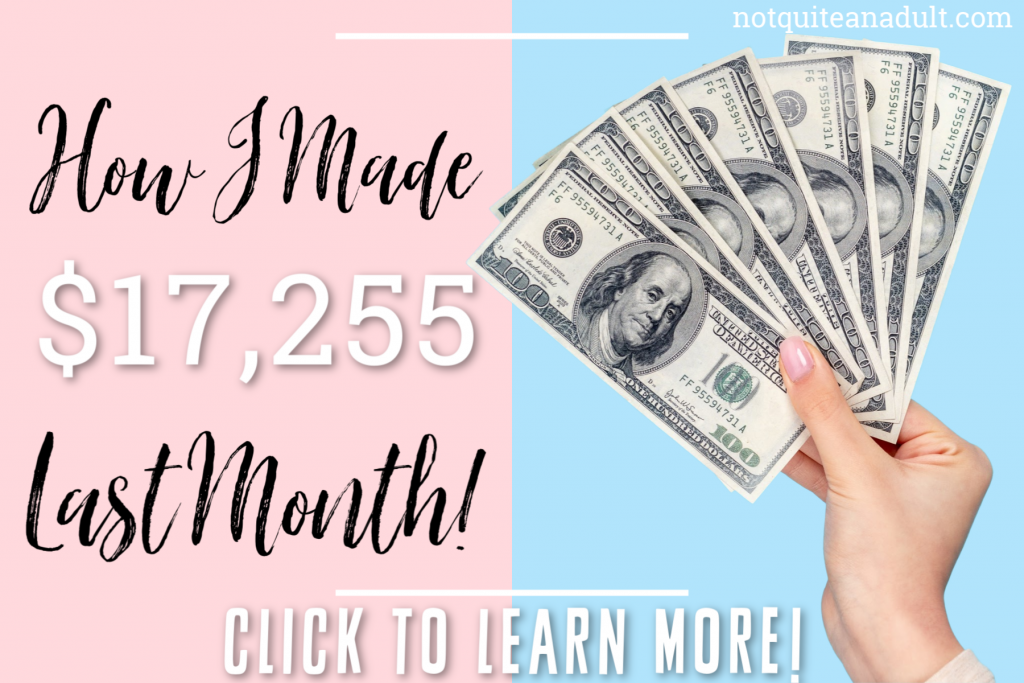There are some times in our lives when we only have enough money to get by with no extras and it can be really hard on people. For me, this happens because I’m in the process of building a business and paying off student loans so I’m not the type of person to throw away money on clothes or shoes like a lot of my friends.
When you realize you’re in this situation it might be time to start using what’s known as a bare bones budget to really help you get by. It’s actually really beneficial to know and understand what your bare bones budget would look like way before you ever need to use it.
Some super common situations where you’d need a bare bones budget could be:
- sudden illness or hospitalization
- an unexpected layoff or job loss
- a career change/starting a business
Our blog posts often contain affiliate links, you can learn more in our very long (and very boring) affiliate disclosure!
Table of Contents
What is a Bare Bones Budget?
A bare bones budget is when you take your budget and cut out every single unnecessary expense that you don’t need to survive. This budget isn’t meant for long-term use (mostly because you’ll go crazy) but it can really help you get through a really tough patch in your life.
A bare bones budget works best when you use the zero-based budgeting method to make it function because it’s really helpful to have your budget zero out so every dollar has a job.
What is Include in a Bare Bones Budget?
When you write a bare bones budget you only get to include what you absolutely need to survive. If you’ve ever heard of Dave Ramsey, he refers to this as the “four walls” which he says are
- Food
- Shelter
- Basic Clothing
- Basic Transportation
Using this Dave Ramsey concept of the four walls you can really get a good sense of what is needed in a bare bones budget, but we’ll dig a little deeper into what can actually be included.
Dave Ramsey’s Four Walls Explained
Food: This only includes groceries. This does not include eating out, buying coffee every morning, or expensive snacks that you don’t actually need. This is a very basic grocery budget with no fancy foods or expensive meats.
Shelter: You can include your mortgage of course, as well as utilities, property taxes, and any absolutely necessary repairs you have to make.
Basic clothing: Non-brand name clothes and basic personal hygiene items that you need every single day.
Transportation: If you’re using a real Dave Ramsey budget you won’t have a car payment because that’s how he does things. However, most people are already upside down on their vehicles so it’s hard to get out of this situation. Under the transportation section, you can have your car payment, gas that gets you places where you absolutely need to be, insurance, and repairs. If you don’t have a car this is where you’d calculate your public transit costs as well.
What You Don’t Include in a Bare Bones Budget
- Brand Name Clothing Items
- Eating Out
- Entertainment (i.e., going to the movies, concerts, etc)
- Netflix/Hulu/Cable
- Vacations
- Excessive Beauty (i.e., manicures, hair cuts, etc)
- Gym Memberships
- Subscription Services
- Etc
How to Create a Bare Bones Budget
Creating a bare bones budget is actually a lot easier than it seems. There’s just a few easy steps that you can follow to get your bare bones budget going, so let’s dig in!
Step 1: Figure Out Your Monthly Income
When you’re taking the time to figure out your monthly income it’s important to make sure you’re not missing anything. It should include both your income and the income of your significant other (if applicable) as well as any income you may get from a side hustle, income from the government, or any child support payments.
For this budget to work you must have an actual number that makes sense and that is realistic.
Step 2: Use Past 6 Months as a Guideline
A great way to figure out how much money you spend is to look at your previous spending as an indicator. First, go through your last 6 months and figure out what things you can’t live without (i.e., the four walls) and how much money you spend on average each month for these items.
You should also figure out an average of how much money you spend on the non-essential items are well so you can really see how far you’re going to be able to cut.
Step 3: Eliminate All Non-Essential Expenses
This is the time when stuff starts to get real and difficult. What you need to do is eliminate anything that you don’t need to survive. This means cutting out manicures, hair cuts, netflix, and anything else that makes you happy (just kidding, not everything!).
Here are a few articles that can help you figure out which expenses you should cut first:
Step 4: Cut as Much as You Can
Now that you’ve figured out which non-essential expenses you can cut, it’s time to try and cut some of the ones that are essential as well. I don’t mean cut them entirely, just cut them back.
For example, you can start using less A/C in the summer and cut back on utilities. Or, you can call your phone service provider and convince them to lower your bill (it usually works best if you threaten to go to another place, haha).
Step 5: Make Extra Money
If you’re dealing with a situation where you must use a bare bones budget, chances are you could use a little extra money. There’s no shame in that, we could all use a little extra money. We have an entire page on this blog with my favourite ways to make money, which you can check out here!
Bare Bones Budget Tips and Tricks
- This is a budgeting system that shouldn’t be a forever thing. Using a bare bones budget is really hard and it is going to make you go a little bit crazy so it’s best to only use it under intense circumstances or only a few times a year. If you’re looking to save money quickly for a few weeks, a bare bones budget is a great option.
- Bare bones budgeting is an amazing way to pay off a small amount of debt really quickly, but if you’re stuck under mountains of debt, it’s going to take a long time and you’re going to go crazy before it’s paid off. Focus on doing it once in a while but still allow yourself to have some fun once in a while.
- Try your best to find as much free entertainment as possible while you’re doing this. You don’t want to be stuck inside your home every single day because that’s going to make you a little crazy (seriously, this tight of a budget can make you crazy!)
- Use a no-spend weekends or no-spend months as a way to save money during this time as well!
- In order to really make a bare bones budget work, you’re going to need to be prepared for emergencies so you should use your first month or so of your bare bones budget to build up at least a $1000 emergency fund
- Final Tip: Focus on progress, not perfection. It’s going to be hard and you’re not going to be perfect. Let yourself live.
Final Thoughts
Budgeting is never going to be anyone’s favourite thing to do, because it makes life a little less fun and spontaneous. However, budgeting makes everything easier because you can make your money work for you instead of you working hard to organize your money. Using a bare bones budget is an awesome way to get out of a financial pickle and get your life back together.










Leave a Reply